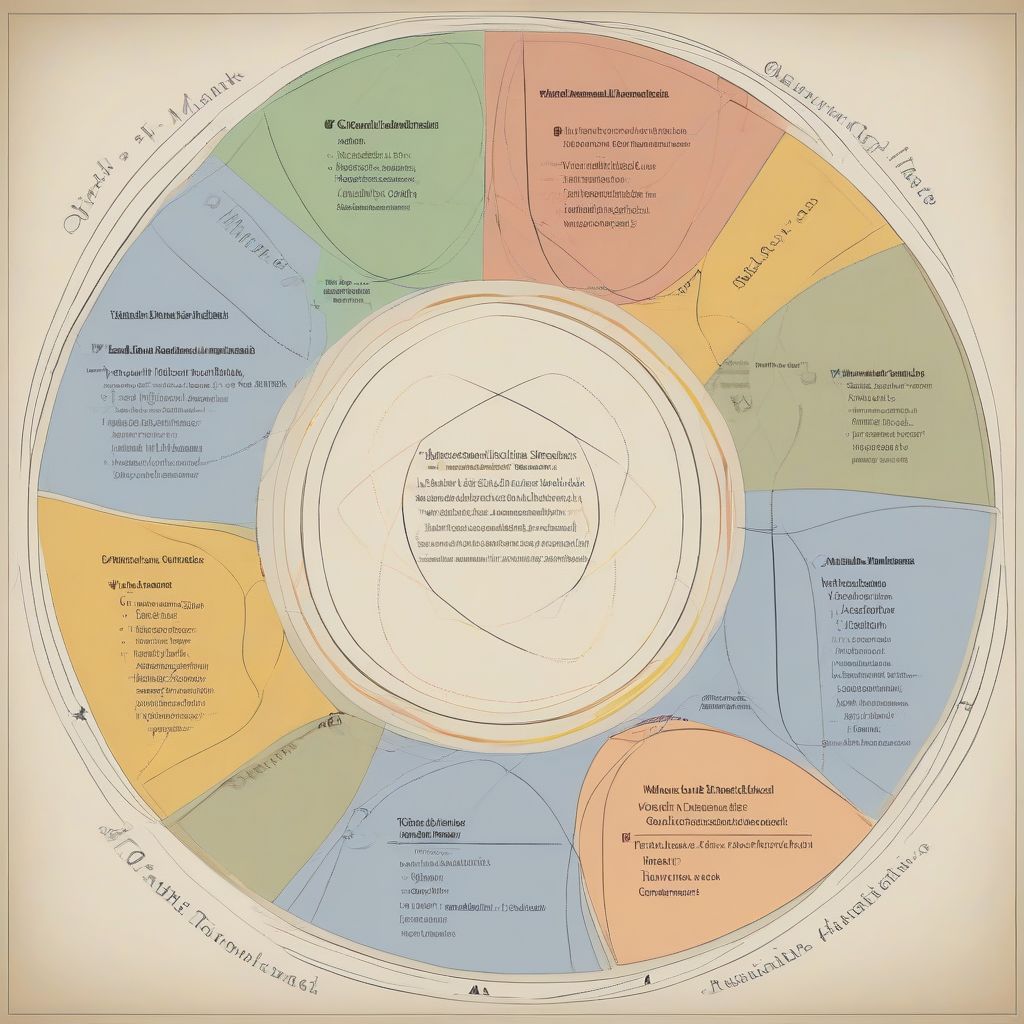Have you ever noticed how certain ideas, like love, loss, or revenge, seem to pop up again and again in different books, plays, and poems? These recurring ideas are called themes, and comparing them across multiple works can unlock a deeper understanding of literature and the human condition. It’s like discovering hidden connections between seemingly disparate stories, revealing the timeless questions and concerns that have captivated writers and readers for centuries. So, how do we effectively compare themes across different literary works?
Understanding Literary Themes
Before diving into comparison, let’s solidify our understanding of themes. A theme isn’t just the subject of a work, like “war” or “love.” It’s the underlying message or insight the author conveys about that subject. For example, one work might explore the destructive nature of war, while another might focus on the resilience of the human spirit amidst conflict. Think of themes as the author’s takeaway message, the big idea they want you to ponder long after you finish reading.
Identifying Themes in Literature
Spotting themes requires careful reading and observation. Pay attention to recurring motifs, symbols, character arcs, and the overall tone of the work. Ask yourself: What are the major conflicts? What are the characters’ motivations? What lessons are learned? For example, recurring images of birds in a novel might symbolize freedom or escape, contributing to a larger theme of liberation.
Strategies for Comparing Themes
Once you’ve identified key themes in your chosen works, you can start the comparison process. Here are some effective strategies:
1. Establish a Common Ground
Begin by identifying the shared thematic ground between the works. What overarching themes connect them? For instance, are they both exploring the theme of ambition, albeit through different lenses? Establishing this common ground provides a framework for your comparison.
2. Analyze Thematic Variations
Even when works share a common theme, they often explore it in unique ways. Analyze how each author approaches the theme. Do they offer contrasting perspectives? For example, one work might celebrate ambition while another warns of its dangers. Consider the historical context, genre, and the author’s personal background as you analyze these variations. “Shakespeare’s Macbeth and Mary Shelley’s Frankenstein, while separated by centuries, both grapple with the corrupting influence of unchecked ambition,” says Dr. Emily Carter, Professor of English Literature at University College London. “However, Macbeth focuses on the political ramifications of ambition, while Frankenstein explores the ethical implications of scientific ambition.”
3. Examine Literary Devices
Pay attention to the specific literary devices each author uses to convey their themes. How do they use symbolism, imagery, and figurative language to reinforce their message? Comparing these techniques can reveal insightful differences in their artistic approaches. For instance, one author might use vivid metaphors to depict the destructive nature of grief, while another might employ understated language to convey a sense of quiet despair.
4. Consider Character Development
Characters often embody and illuminate the themes of a literary work. Compare how characters in different works grapple with similar thematic concerns. Do they make similar choices? Do they learn similar lessons? Analyzing character arcs can provide valuable insights into how themes are developed and explored.
5. Contextualize Your Comparison
Always consider the historical and cultural context in which each work was created. Social norms, political events, and philosophical movements can significantly influence how themes are presented and interpreted. For example, a work written during wartime might explore the theme of courage in a very different way than a work written during peacetime.
 Comparing Themes Across Literary Works
Comparing Themes Across Literary Works
Example: Comparing the Theme of Isolation
Let’s consider the theme of isolation in two distinct works: Emily Dickinson’s poem “Because I could not stop for Death” and Albert Camus’ novel The Stranger. While both explore the theme of isolation, they do so through different lenses. Dickinson personifies death as a suitor, highlighting a sense of detachment from the world of the living. Camus, on the other hand, portrays Meursault’s existential isolation, stemming from his inability to connect with societal norms and emotions. By comparing these two works, we gain a deeper understanding of the multifaceted nature of isolation and how it can manifest in different forms.
Practical Tips for Comparative Analysis
-
Choose works with thematic connections: Select works that share a common thematic ground, even if they differ in genre, style, or historical period.
-
Develop a strong thesis statement: Your thesis should clearly articulate the central argument of your comparison.
-
Organize your thoughts: Create an outline or use a graphic organizer to structure your comparison.
-
Use textual evidence: Support your analysis with specific examples and quotes from the texts.
-
Avoid plot summary: Focus on analyzing the themes, not retelling the story.
Conclusion: Unlocking Deeper Meaning
Comparing themes across literary works is a powerful tool for literary analysis. It allows us to delve deeper into complex ideas, uncover hidden connections, and gain a richer understanding of the human experience. By exploring how different authors grapple with similar themes, we can appreciate the diverse perspectives and artistic approaches that enrich the world of literature. So, next time you read, look for those thematic echoes and explore the fascinating conversations that unfold across different texts. Share your thoughts and discoveries in the comments below, and let’s delve into the world of literature together.



